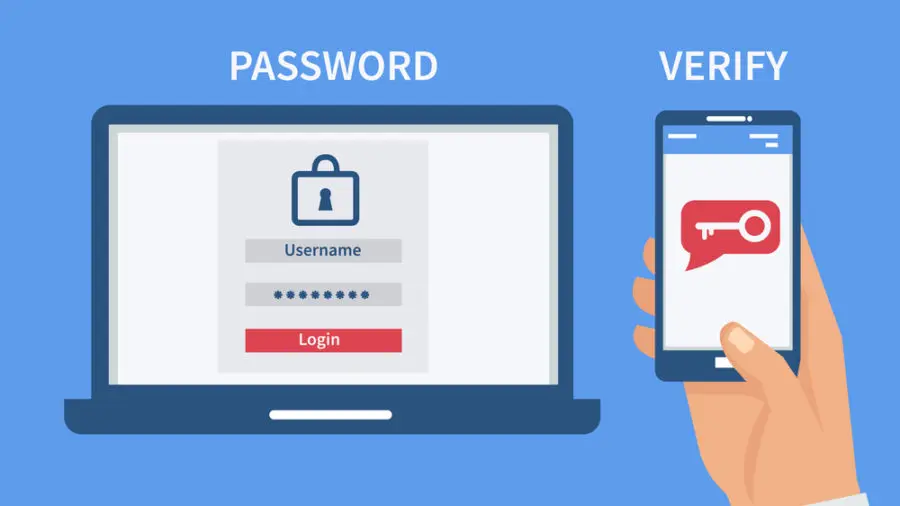In today’s digital era, cyber threats are constantly evolving. Hackers are finding new ways to access sensitive data, from personal information to critical business files. One of the most effective ways to protect accounts and data is Two-Factor Authentication (2FA). By adding an extra layer of security, 2FA ensures that even if passwords are compromised, unauthorized access is prevented.
In this blog, we’ll explore the concept of two-factor authentication, its benefits, how it works, and how it integrates with modern networking solutions like SDWAN to provide comprehensive security for businesses.
What is Two-Factor Authentication (2FA)?
Two-Factor Authentication (2FA), commonly known as 2FA, is a security process that requires users to provide two different forms of verification before accessing an account or system. Instead of relying solely on a password, 2FA combines something you know (like a password) with something you have (like a smartphone or security token).
This additional step makes it significantly harder for hackers to gain access, even if they have stolen your password.
How Does Two-Factor Authentication (2FA) Work?
2FA works by requiring two independent credentials to authenticate a user:
- Something You Know
- This is typically a password, PIN, or answer to a security question.
- Something You Have
- This could be a one-time password (OTP) sent via SMS, an authentication app, or a hardware token.
When logging in, users first enter their password. Then, the system prompts for the second factor. Only after both factors are verified is access granted.
Types of Two-Factor Authentication (2FA)
Businesses can implement different types of 2FA depending on their security needs:
SMS-Based 2FA
The system sends a one-time password (OTP) to the user’s registered mobile number.
Authenticator Apps
Apps like Google Authenticator or Microsoft Authenticator generate time-based codes for login verification.
Hardware Tokens
Physical devices that generate OTPs or use cryptographic keys to authenticate users.
Biometric Authentication
Uses fingerprints, facial recognition, or iris scans as a second verification factor.
Why Two-Factor Authentication (2FA) is Essential
Cybercrime is increasing every year, and simple passwords are no longer enough to protect sensitive information. Here’s why 2FA is critical for businesses:
- Prevents Unauthorized Access
Even if a password is stolen, 2FA ensures that the attacker cannot access the account without the second factor. - Protects Sensitive Data
From client information to financial records, 2FA safeguards critical business data. - Builds Customer Trust
Clients feel confident knowing that your business takes data security seriously. - Compliance with Regulations
Many industries require multi-factor authentication to meet data protection standards and regulatory requirements.
Two-Factor Authentication (2FA) and Modern Networking
In addition to protecting individual accounts, businesses need secure network access. Here, solutions like SDWAN play a key role. SDWAN, or Software-Defined Wide Area Network, optimizes network connectivity while providing robust security.
By integrating Two-factor (2FA) authentication with SDWAN, businesses can:
- Ensure secure remote access for employees.
- Protect sensitive information transmitted over the network.
- Prevent unauthorized devices from connecting to the corporate network.
- Monitor and control network traffic efficiently.
This combination of 2FA and SDWAN creates a powerful security layer that minimizes risk while supporting modern, distributed business environments.
Best Practices for Implementing Two-Factor Authentication (2FA)
To maximize the benefits of 2FA, businesses should follow these best practices:
- Enforce 2FA for All Users: Apply 2FA across email, VPN, cloud apps, and internal systems.
- Educate Employees: Train staff on the importance of 2FA and how to use it effectively.
- Regularly Update Methods: Keep authentication apps and hardware tokens updated.
- Combine with Strong Passwords: Use complex passwords along with 2FA for maximum security.
- Monitor Access Logs: Track failed login attempts and unusual activities to detect potential threats.
Benefits of Combining 2FA with SDWAN
The integration of Two-Factor Authentication (2FA) with SDWAN offers multiple advantages for modern businesses:
- Enhanced Security: Protects both user accounts and network connections.
- Flexible Remote Work: Employees can securely access company resources from any location.
- Reduced Risk of Breaches: Multi-layered security reduces the likelihood of successful cyberattacks.
- Improved Network Management: SDWAN provides centralized control and monitoring, ensuring secure and optimized connectivity.
Future of Two-Factor Authentication (2FA)
With the increasing sophistication of cyberattacks, 2FA will continue to evolve. Biometric verification and AI-driven behavioral authentication are expected to become more prevalent. Businesses adopting these technologies now will be better prepared for future threats.
Additionally, as more organizations migrate to cloud services and remote work setups, combining 2FA with secure networking solutions like SDWAN will remain essential for protecting sensitive information and maintaining business continuity.
Conclusion
Two-Factor Authentication (2FA) is no longer optional—it is a critical component of any business security strategy. By adding an extra layer of verification, businesses can prevent unauthorized access, protect sensitive data, and build trust with customers.
When combined with SDWAN, 2FA ensures secure network connectivity for modern enterprises, whether employees are working on-site or remotely. Investing in these technologies today can save businesses from potential data breaches, financial loss, and reputational damage tomorrow.
Implementing a robust 2FA strategy alongside a secure SDWAN network is a proactive step toward a safer, smarter, and more secure digital environment.

